Starfish Sansevieria (Sansevieria Cylindrica Boncel) Grow & Care Guide
Written by Iris
Nov 18 2021
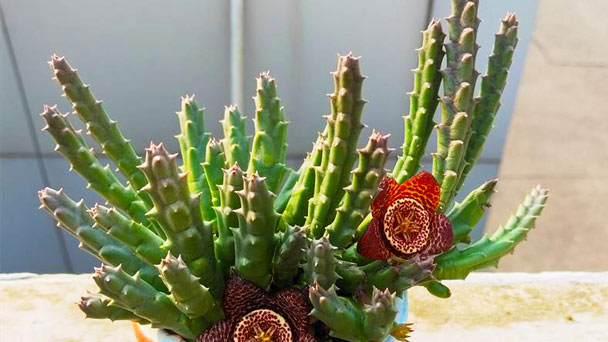
Starfish Sansevieria (Sansevieria Cylindrica Boncel) are succulents with long fleshy, tubular leaves. The rod-like succulent leaves of Starfish Sansevieria are a greenish-gray color with darker stripes wrapping around the cylinder leaves. The Starfish Sansevieria species grows tube-like leaves up to 7 ft. (2 m) tall. Starfish Sansevieria is also called the African spear plant, cylindrical snake plant, snake cactus plant, and spear sansevieria. Modern botanical classifications also give the plant the scientific name Dracaena Angolensis.
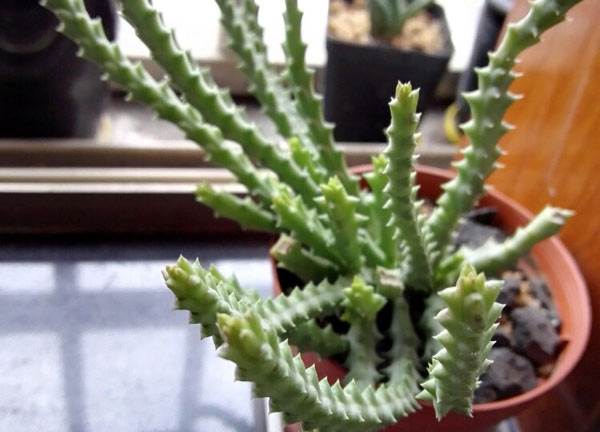
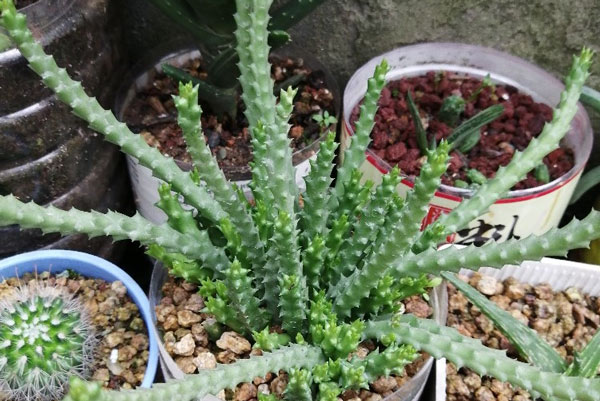
Though Starfish Sansevieria will grow best in bright light, they are quite tolerant to low light. Because of this, they are commonly found in offices and other spaces where there is not an abundance of light.
The succulent soil mix contains some organic matter—such as peat moss—and inorganic amendments. Peat moss is useful for retaining some moisture. However, you need to add soil amendments such as coarse sand, poultry grit, aquarium gravel, or perlite to ensure adequate drainage.
Starfish sansevierias—like all succulents—can’t stand in soggy, damp soil. The shallow root system quickly starts to rot and decay if the potting medium is continuously wet. Root rot deprives the Starfish Sansevieria of necessary nutrients and causes fungal diseases that eventually lead to the plant’s death.
To water a Starfish Sansevieria, first poke your finger in the soil to check for dryness. If the growing medium is bone dry, give the soil a thorough drenching with room-temperature water. Allow all the excess water to drip out before returning the succulent to a sunny location.
The houseplant watering technique of drench and dry watering is the best way to care for starfish succulents. Deep root hydration ensures that roots get enough moisture. By allowing the soil to become dry, you help mimic the succulent’s natural growing habitat in hot, arid climates.
Remember, starfish sansevieria plants have thick cylindrical leaves that are excellent for storing moisture. So, the plants will endure many weeks without getting any water. When it comes to watering starfish sansevierias, less watering is better than watering too often.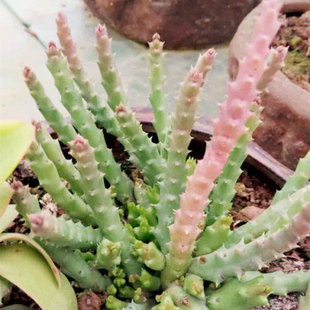
Generally, if your room is at a comfortable temperature, your sansevieria starfish will grow well.
The right care for Starfish Sansevieria means protecting them from fluctuations in temperature. For example, fan snake plants could suffer if they sit in drafts from open windows or air-conditioning airflow. During winter, a Starfish Sansevieria sitting near a hot radiator could start to wilt from the heat.
Starfish Sansevieria grows in USDA zones 10 and 11. If growing outdoors, make sure the temperature doesn’t drop below 50°F (10°C). If so, bring the containers indoors through the winter until the weather warms the following spring.
Starfish succulents require low humidity to thrive well. Species of plants in the genus Sansevieria need dry air and good aeration for best growth. Because household air tends to be dry, you don't have to worry about indoor humidity. The fleshy fan-shaped succulent gets enough moisture if you water it properly.
Like most varieties of succulents, starfish spear plants are slow-growers. So, over-fertilizing the plants can cause a buildup of mineral salts—which can be just as bad as overwatering. If you decide to supply extra nutrients, choose a suitable organic houseplant fertilizer.
However, you may find with proper care that your starfish snake plant grows fine without additional fertilization.
Drop a tiny drop of alcohol on mealybugs to rid the plant of them. Remove spider mites by washing the leaves with a cloth and warm water or spraying organic Neem oil. Reminder: The presence of pests probably indicates your plant is not well. Restoring it to health most likely will end pest and bug problems.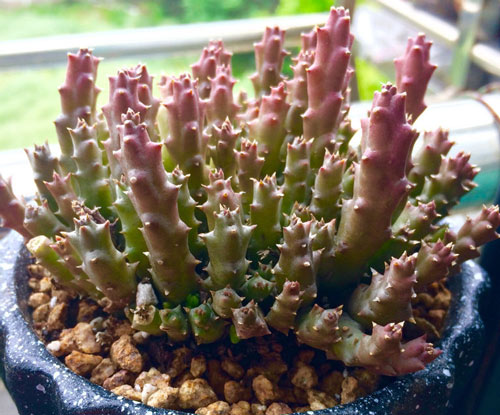
However, you may need to repot the succulent so you can refresh the potting mix and prune off any dead or decaying roots. If root damage is extensive, it may be too late to save the fan snake plant.
In winter, colder temperatures and too much soil moisture can cause fungal infections to flourish. During winter, when growth is dormant, only water a Starfish Sansevieria plant when the soil is completely dry. This may mean watering the plant as little as every other month.
Starfish Sansevieria Care Quick InfoWhere to Grow Starfish SansevieriaHow to Grow Starfish SansevieriaHow to Care for Starfish SansevieriaStarfish Sansevieria Light RequirementsStarfish Sansevieria Soil CareStarfish Sansevieria WateringStarfish Sansevieria Temperature & Humidity CareStarfish Sansevieria FertilizerStarfish Sansevieria PruningStarfish Sansevieria Pests & Diseases CareStarfish Sansevieria FAQIs Starfish Sansevieria Poisonous?Why is Starfish Sansevieria plant dying?
Starfish Sansevieria Care Quick Info
| Botanical/Scientific Name | Sansevieria Cylindrica Boncel |
| Common Name | Boncel Snake Plant, Starfish Succulent, Starfish Plant |
| Uses | Wonderful indoor plant |
| Origin | Angola |
| Light Care | Bright indirect light |
| Soil Care | Well-draining sandy soil |
| Temperature Care | 60 °F to 80 °F |
| Humidity Care | Low humidity |
| Watering | Water when it is completely dry |
| Pruning Care | Don't require pruning |
| Fertilizer Care | A succulent fertilizer diluted to half-strength |
| Propagation | Leaf cuttings or plant division |
| Toxic | Are poisonous to cats and dogs |
| Flower Color | White |
Where to Grow Starfish Sansevieria
The best location for Starfish Sansevieria plants is in a bright room with plenty of natural sunlight. Ideally, compact spear sansevierias grow well on a sunny windowsill. If they grow near a south-facing window, use a sheer curtain to protect the fleshy succulent from the sun's direct rays.
How to Grow Starfish Sansevieria
Starfish Sansevieria will grow pups from rhizome roots that can be removed by division and propagated to grow on their own. starfish sansevieria reproduces asexually via underground rhizomes that send up offsets. These offsets, or pups, can be separated using a clean knife or garden spade and potted into their own container. If dividing a snake plant, allow the rhizome to callous over for a few days before potting into fresh potting medium. Keep the soil lightly moist or provide a humid environment to encourage rooting.
How to Care for Starfish Sansevieria
Starfish Sansevieria Light Requirements
Starfish Sansevieria is an extremely tolerant and adaptable plant. It thrives in bright indirect light or dappled sun, and can even acclimate to a few hours of direct sun. Morning or evening sun is best, as intense afternoon sun can burn or bleach the leaves.Though Starfish Sansevieria will grow best in bright light, they are quite tolerant to low light. Because of this, they are commonly found in offices and other spaces where there is not an abundance of light.
Starfish Sansevieria Soil Care
The best soil for Starfish Sansevierias is a loamy potting mix with excellent drainage. To make a potting mix, combine two parts regular potting soil, one part perlite, and one part coarse horticultural sand. An ideal potting medium is a potting mix for succulent plants. The soil should be aerated so that it dries fast, and water drains quickly.The succulent soil mix contains some organic matter—such as peat moss—and inorganic amendments. Peat moss is useful for retaining some moisture. However, you need to add soil amendments such as coarse sand, poultry grit, aquarium gravel, or perlite to ensure adequate drainage.
Starfish sansevierias—like all succulents—can’t stand in soggy, damp soil. The shallow root system quickly starts to rot and decay if the potting medium is continuously wet. Root rot deprives the Starfish Sansevieria of necessary nutrients and causes fungal diseases that eventually lead to the plant’s death.
Starfish Sansevieria Watering
Water starfish plants only when the soil dries out. In summer, water the succulents every week or two. During winter, water starfish sansevieria infrequently—every month or even less. Waiting for the potting mix to dry before hydrating the soil ensures you don’t overwater the drought-tolerant plant.To water a Starfish Sansevieria, first poke your finger in the soil to check for dryness. If the growing medium is bone dry, give the soil a thorough drenching with room-temperature water. Allow all the excess water to drip out before returning the succulent to a sunny location.
The houseplant watering technique of drench and dry watering is the best way to care for starfish succulents. Deep root hydration ensures that roots get enough moisture. By allowing the soil to become dry, you help mimic the succulent’s natural growing habitat in hot, arid climates.
Remember, starfish sansevieria plants have thick cylindrical leaves that are excellent for storing moisture. So, the plants will endure many weeks without getting any water. When it comes to watering starfish sansevierias, less watering is better than watering too often.

Starfish Sansevieria Temperature & Humidity Care
Starfish succulent grows outdoors in hot, arid climates. The good news is that average room temperatures are excellent for growing spear sansevierias indoors. An ideal temperature range is 60°F to 80°F (15°C – 26°C)—as long as you protect the star-shaped succulent from temperature extremes. The minimum temperature for starfish sansevierias is 50°F (10°C).Generally, if your room is at a comfortable temperature, your sansevieria starfish will grow well.
The right care for Starfish Sansevieria means protecting them from fluctuations in temperature. For example, fan snake plants could suffer if they sit in drafts from open windows or air-conditioning airflow. During winter, a Starfish Sansevieria sitting near a hot radiator could start to wilt from the heat.
Starfish Sansevieria grows in USDA zones 10 and 11. If growing outdoors, make sure the temperature doesn’t drop below 50°F (10°C). If so, bring the containers indoors through the winter until the weather warms the following spring.
Starfish succulents require low humidity to thrive well. Species of plants in the genus Sansevieria need dry air and good aeration for best growth. Because household air tends to be dry, you don't have to worry about indoor humidity. The fleshy fan-shaped succulent gets enough moisture if you water it properly.
Starfish Sansevieria Fertilizer
Starfish Sansevieria are not heavy feeders. The plants grow best in sandy soil without many nutrients. However, these spear sansevierias can benefit from monthly fertilization with a succulent fertilizer diluted to half-strength. Only fertilize starfish sansevieria succulents during the growing season, and don’t feed during winter.Like most varieties of succulents, starfish spear plants are slow-growers. So, over-fertilizing the plants can cause a buildup of mineral salts—which can be just as bad as overwatering. If you decide to supply extra nutrients, choose a suitable organic houseplant fertilizer.
However, you may find with proper care that your starfish snake plant grows fine without additional fertilization.
Starfish Sansevieria Pruning
Very little maintenance is required to keep Starfish Sansevieria plants happy and thriving. They prefer to be root-bound and so can live in their pot for several years before repotting. As a rule of thumb, these plants should be repotted in a container that is 2”-3” wider in diameter, once every two to three years.Starfish Sansevieria Pests & Diseases Care
Beware of common houseplant pests, especially spider mites, mealybugs, and vine weevils. Inspect the plant's leaves when watering.Drop a tiny drop of alcohol on mealybugs to rid the plant of them. Remove spider mites by washing the leaves with a cloth and warm water or spraying organic Neem oil. Reminder: The presence of pests probably indicates your plant is not well. Restoring it to health most likely will end pest and bug problems.

Starfish Sansevieria FAQ
Is Starfish Sansevieria Poisonous?
Starfish Sansevieria plants are poisonous to cats and dogs. According to the ASPCA, plants in the family Agavaceae contain saponins. Ingesting parts of sansevieria plants can cause nausea, vomiting, and diarrhea in dogs and cats.Why is Starfish Sansevieria plant dying?
Overwatering is the most common reason why Starfish Sansevieria plants die. Sitting in soggy soil causes root decay and the thick tubular leaves to droop and wilt. To revive a dying starfish sansevieria, hold off watering until the soil dries out.However, you may need to repot the succulent so you can refresh the potting mix and prune off any dead or decaying roots. If root damage is extensive, it may be too late to save the fan snake plant.
In winter, colder temperatures and too much soil moisture can cause fungal infections to flourish. During winter, when growth is dormant, only water a Starfish Sansevieria plant when the soil is completely dry. This may mean watering the plant as little as every other month.
Latest Updated
- Benefits of Bugleweed - 7 Science-backed Health Benefits
- Bugleweed Dangers & Side Effects - Is It Poisonous?
- How to Plant Evergreen Trees - What You Should Know
- When to Plant Evergreens - Grow Guide for Evergreen Trees
- 12 Wonderful Evergreen Shrubs for Your Garden
- 12 Popular Evergreen Plants with Pictures for Beginners
- When And How To Prune A Lilac Bush Like a Pro
- How to Grow & Care for Lilac Vine (Hardenbergia Violacea)
- Japanese Lilac Tree (Syringa Reticulata) Care & Propagation Guide
- Shumard Oak Pros and Cons - What to Know
Popular Articles
- Winter maintenance of Antirrhinum Majus
- How to Grow Terminalia Mantaly Tree
- How to Grow and Care for Crossostephium Chinense
- How to grow Antirrhinum Majus in spring
- Peristeria Elata (Dove Orchid) Profile: Info & Care Guide
- Underwatered Snake Plant (Sansevieria Trifasciata) - Signs And How To Fix
- How to Care for Brazilian Jasmine Plant (Mandevilla Sanderi)
- How to Grow & Care for Graptopetalum Purple Delight in Summer
- Rosa Chinensis (China Rose): Plant Growing & Care Tips
- How to Care for Baby Sun Rose (Aptenia Cordifolia)